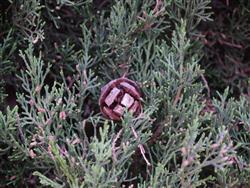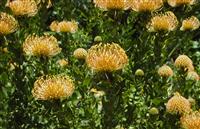Taxonomy
PLANT TAXONOMY (CLASSIFICATION)
 Classification and identification of plants is the foundation of good horticulture.
Classification and identification of plants is the foundation of good horticulture.
Without accurate identification, we cannot differentiate between the tens of thousands of different plants that we cultivate, and in turn cater to the different cultural requirements of each.
Even at the lowest level of classification there are major differences between what might to the untrained eye appear to be the same plant.
For Example, consider:
-
As young seedlings hundreds of different species can appear almost identical, but as adults, the height of some might be ten times the height of others
-
Two different fruit trees can look identical in every way, and even the fruit may taste the same; but one cultivat may be highly susceptible to a disease which the other cultiuvar is highly resistant to.
-
Two shrubs may appear the same in every way, but one may grow easily from a cutting, while the other hasa great difficulty establishing roots.
 Hybrid and Cultivar are NOT the same.
Hybrid and Cultivar are NOT the same.
Cultivar is any genetically unique type of plant that is cultivated (Cultivated simply means that man plants and cares for it)
Hybrid means a genetically unique type of plant that is created through two different types of plants cross breeding. Usually a hybrid occurs through one variety of a species crossing with another variety of the same species; BUT occasionally two different species or even two different genera can produce a hybrid. Hybrids can be created artificially by a person manipulating the cross breeding (in which case they are both a hybrid, and a cultivar) ...but they can also occur naturally with no involvement from man at all (in which case they are a hybrid; but not a cultivar)
A variety is a term used to distinguish between different genetic types of the same genus. These might or might not be cultivated; so they may be cultivars; and they might not. They may have resulted from creating a hybrid, but they may not have resulted that way. ...so a variety does not need to be a hybrid.
All of these terms are different!
 There are over 100,000 different plants in common cultivation around the world; and until you can readily identify the genus, species and family for around 1,000 you probably don't have a proper foundation knowledge to develop into a really good horticulturist!
There are over 100,000 different plants in common cultivation around the world; and until you can readily identify the genus, species and family for around 1,000 you probably don't have a proper foundation knowledge to develop into a really good horticulturist!
Where to go from Here?
Good Books can help. We recommend and supply a rande of excellent taxonomy texts at http://www.acsbookshop.com/Books_ProductCategory.aspx?ID=11&SubCatID=47
A sound education in Botany and Plant Identification is essential. If you are doing your first horticulture course, make sure it has a strong plant identification component. If you have done studies in horticulture before, that are not strong in plant taxonomy; it is advisable to take supplementary studies that are (eg. Horticulture II
Experience with plants is critical, but only after you have first developed a strong foundation knowledge, and understand how plants are classified. Once you have done this, it becomes critical to see and experience a wide range of plants. Some people do this by working with them (eg. at a nursery), others by collecting them for their own garden; and yet others by visiting botanic gardens and other places where they can observe plants growing.
SOMETIMES EVEN EXPERTS DISAGREE
Scientists in herbariums and botanic gardens have always been most influential in the naming of plants; but I discovered some years ago that sientists in my own country were following the rulings of one international committee, while scientists in another were following a different one.
Things became even more complicated when I began to encounter clubs and societies that had great expertise and influence with a particular group of plants; and were having disagreements with respected taxonomists.
Problem is that as the world gets bigger, and more people have become educated and interested in plants, there are more varying opinions about what plants should be called.
Not to be left out, other industry bodies (Nurserymen, Landscapers etc) sometimes take a stand that they will not accept some name changes. To confuse the issue further companies that print almost all the plant labels for plants sold in nurseries are at times refusing to promote new name changes, or delaying the changes; which means the general public are almost universally using an old name, and a small group of scientists use a new one.
I could present even more examples - the point is though that given we are working across international borders (and the general trend of globalization), we need to be careful to make allowances and promote the taxonomic system as being the best and most accurate method of plant ID, but to point out that it can still occasionally have glitches due to these sorts of issues.
John Mason
Principal ACS Distance Education
You may also be interested in....